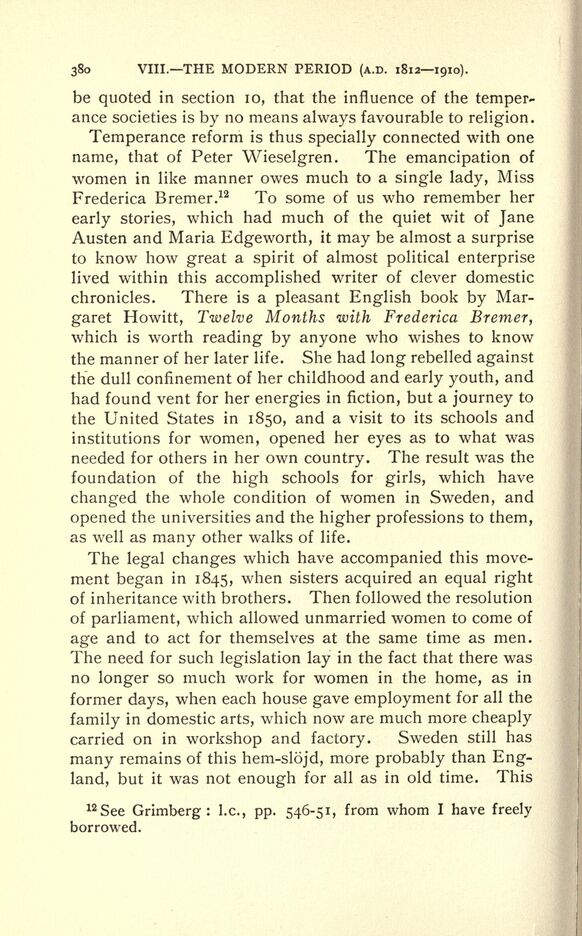
Full resolution (JPEG) - On this page / på denna sida - VIII. The Church in the last century (1811—1910 A.D.)

<< prev. page << föreg. sida << >> nästa sida >> next page >>
Below is the raw OCR text
from the above scanned image.
Do you see an error? Proofread the page now!
Här nedan syns maskintolkade texten från faksimilbilden ovan.
Ser du något fel? Korrekturläs sidan nu!
This page has never been proofread. / Denna sida har aldrig korrekturlästs.
38o VIII. THE MODERN PERIOD (A.D. 18121910).
be quoted in section 10, that the influence of the temper
ance societies is by no means always favourable to religion.
Temperance reform is thus specially connected with one
name, that of Peter Wieselgren. The emancipation of
women in like manner owes much to a single lady, Miss
Frederica Bremer.12
To some of us who remember her
early stories, which had much of the quiet wit of Jane
Austen and Maria Edgeworth, it
may be almost a surprise
to know how great a spirit of almost political enterprise
lived within this accomplished writer of clever domestic
chronicles. There is a pleasant English book by Mar
garet Howitt, Twelve Months with Frederica Bremer,
which is worth reading by anyone who wishes to know
the manner of her later life. She had long rebelled against
the dull confinement of her childhood and early youth, and
had found vent for her energies in fiction, but a journey to
the United States in 1850, and a visit to its schools and
institutions for women, opened her eyes as to what was
needed for others in her own country. The result was the
foundation of the high schools for girls, which have
changed the whole condition of women in Swr
eden, and
opened the universities and the higher professions to them,
as well as many other walks of life.
The legal changes which have accompanied this move
ment began in 1845, when sisters acquired an equal right
of inheritance with brothers. Then followed the resolution
of parliament, which allowed unmarried women to come of
age and to act for themselves at the same time as men.
The need for such legislation lay in the fact that there was
no longer so much work for women in the home, as in
former days, when each house gave employment for all the
family in domestic arts, which now are much more cheaply
carried on in workshop and factory. Sweden still has
many remains of this hem-slojd, more probably than Eng
land, but it was not enough for all as in old time. This
12
See Grimberg :
I.e., pp. 546-51, from whom I have freely
borrowed.
<< prev. page << föreg. sida << >> nästa sida >> next page >>